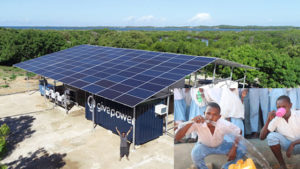 Approximately 2.2 billion people worldwide do not have access to safe drinking water facilities. This is happening on a planet covered by that essential element for life by 71 percent. What seems like a contradiction can be the key challenge for humanity’s future: how can we turn the oceans ‘ seawater into drinking water.
Approximately 2.2 billion people worldwide do not have access to safe drinking water facilities. This is happening on a planet covered by that essential element for life by 71 percent. What seems like a contradiction can be the key challenge for humanity’s future: how can we turn the oceans ‘ seawater into drinking water.
The answer appears to be in a small town near Somalia’s border in Kenya.
According to a report published less than two months ago by UNICEF and the World Health Organization, one in every 3 people in the world have no access to drinking water.
Conditions in sub-Saharan Africa are even worse. For this purpose, the region was selected to build the first solar plant project to turn the salt water of the Indian Ocean into clean drinking water. This has been in use since
Kiunga is the name of the fishing town where the project is operating successfully. It was funded by the non-profit Givepower and the organization is already planning to replicate the project in other countries, such as Colombia and Haiti, thanks to its achievements.A traditional desalination plant uses large amounts of power, the system is costly and can work only in places with adequate infrastructure to produce and distribute so much water.
These problems have been solved by the NGO using a technology they call “solar water farms,” which involves installing solar panels capable of producing 50 kilowatts of energy, high-performance Tesla batteries to store it, and 2 water pumps operating 24 hours a day.Every day, the network will provide 35,000 citizens with drinking water.
In fact, the water quality is better than that of a conventional desalination plant, according to GivePower.
However, it does not have the negative impact on the environment that the process usually creates because salt extraction generates salty contaminants and toxins that are tamp to animals and plants. Kiunga becomes an area of extreme drought after the rainy season produced by the monsoon wind, and its 3,500 residents have been forced to travel for an hour to collect water. The only supply that they used to have at their fingertips originated from a well on the same stream where animals used to bathe.
It was full of pollutants and parasites that might cause diseases such as E. Coli, and mortality, too.They had to drink, bathe, and wash their belongings with that dirty and salty water before implementing this technology. “You have children in these villages and they have these bruises on their stomachs or thighs because they have so much salt on their wounds. They basically poisoned their families with this water, “says Hayes Barnard, GivePower’s president.
